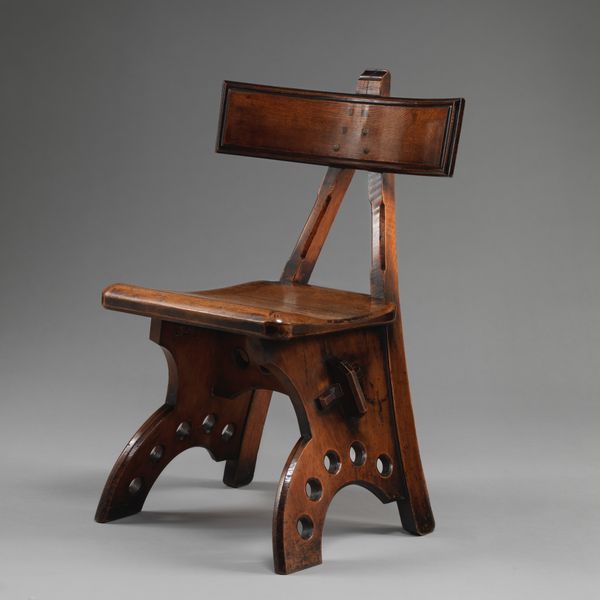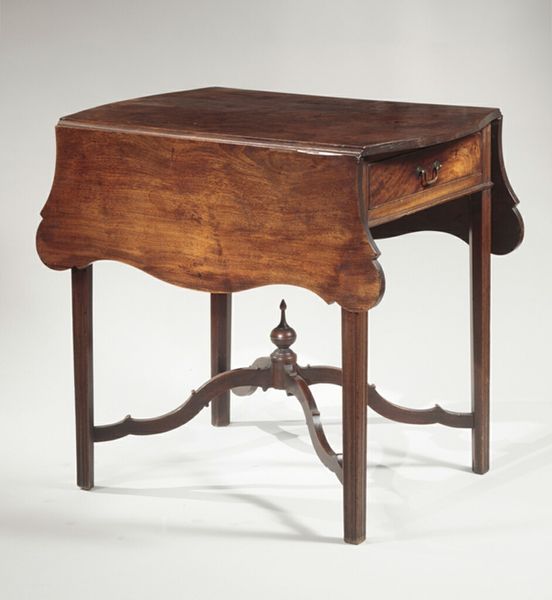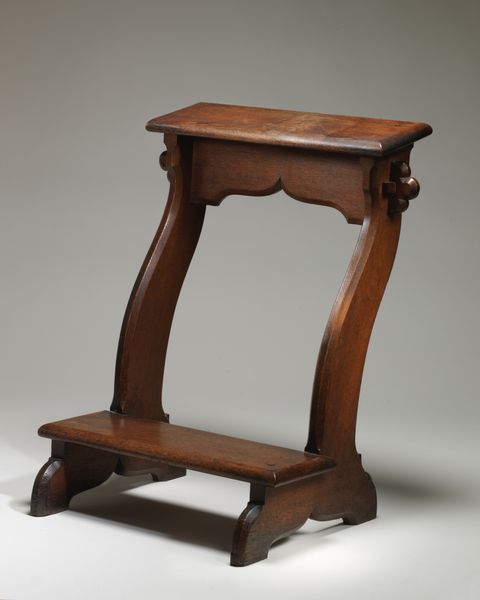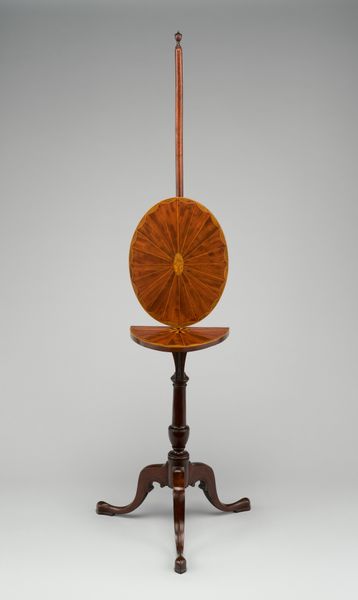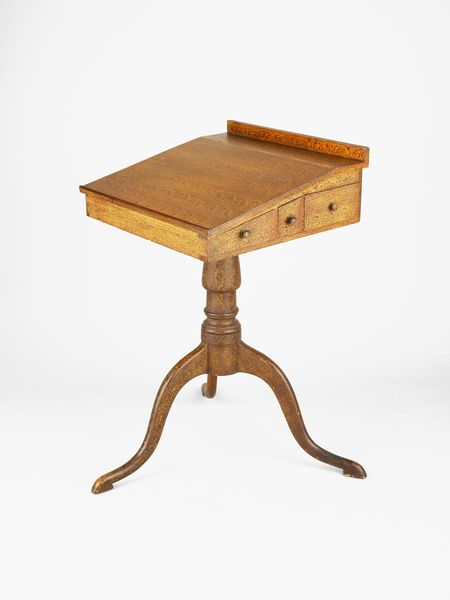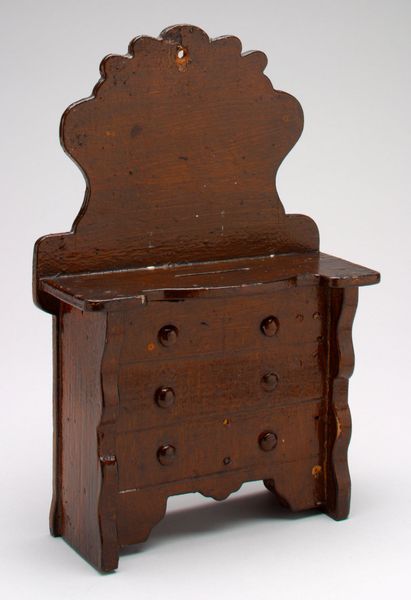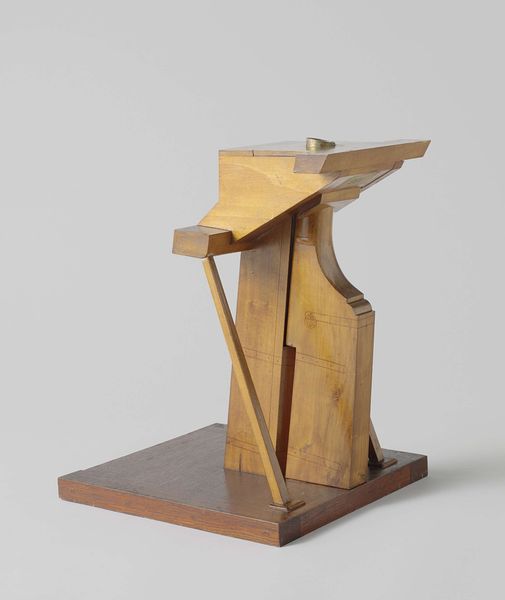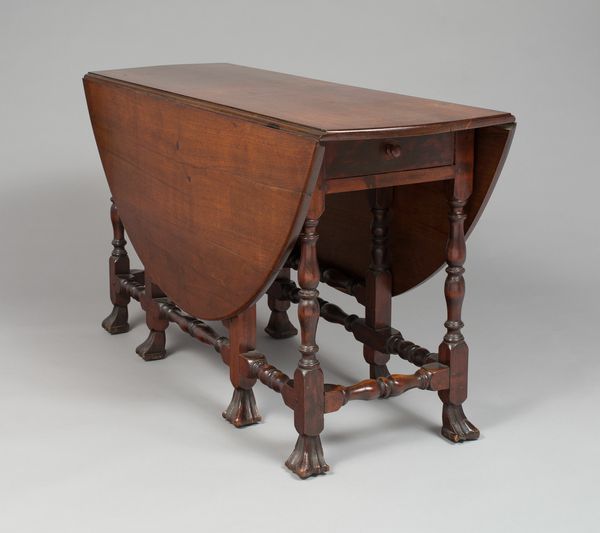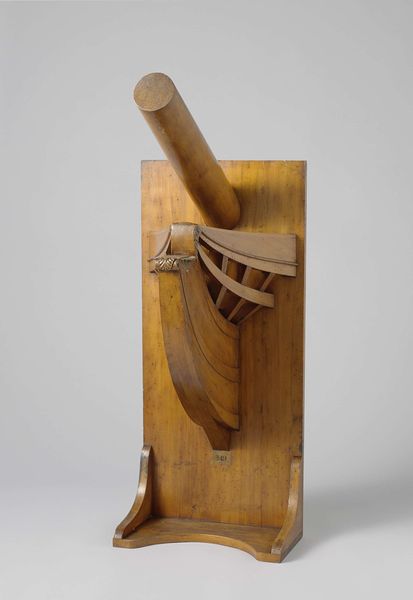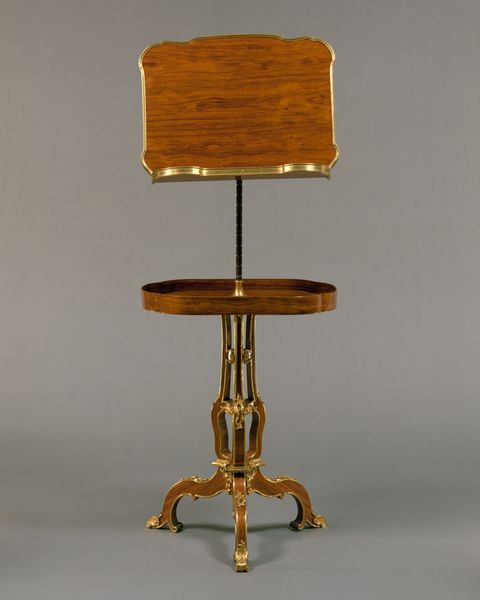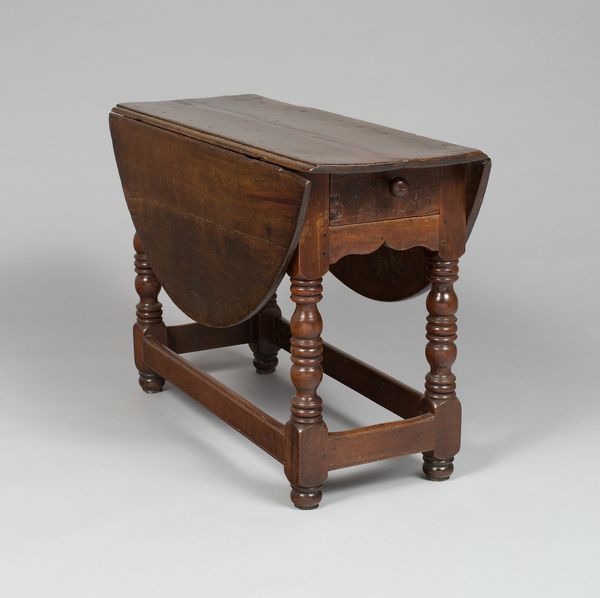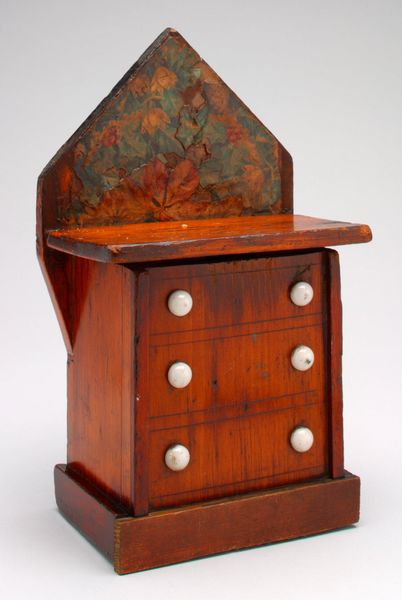
carving, wood
#
carving
#
neoclassicism
#
furniture
#
wood background
#
wood
#
decorative-art
Dimensions: 74.3 × 46.4 × 47 cm (29 1/4 × 18 1/4 × 18 1/2 in.)
Copyright: Public Domain
Curator: Well, isn’t this piece curious! It strikes me as almost bashful; as though it is averting its gaze to the corner. What a treat that we get to feature “Stand”, crafted between 1791 and 1810 by an anonymous artist. You can see it for yourself when you are at The Art Institute of Chicago. Editor: Yes, my first impression is that it has been tucked away. Its geometric form has this very stern sort of energy, while the texture looks unexpectedly supple; smooth almost. Curator: It’s wood—carved with a decorative touch nodding to neoclassicism, and it functions, ostensibly, as a table, a functional sculpture to set things upon. There's something profoundly unsettling about utility being raised to the level of art... it feels like it shifts value somehow. Or am I just projecting my anxiety again? Editor: Maybe we're both projecting a bit! When looking at neoclassical pieces we must recall their deep connection to ideals of reason and order. But in a revolutionary context—both American and French— this kind of "ordered" aesthetic also reinforces systems of power and privilege. This wasn't "art for all" at the time. Who owned this object, and what did it signify for them? Curator: I think there’s definitely tension, and objects become extensions of us and our worldviews. The material world shaping and shaped by social ones, yeah? In this stand, I sense that push-and-pull—it's as much about being seen as it is about being useful. The delicate curves of the legs meeting this rigidly square tabletop. Editor: Right! The negotiation is what I think makes decorative art so potent! These were things intended to beautify daily existence for particular people, which makes me reflect on whose existence matters and why. The shape alone also stands in contrast with more free-flowing organic designs, which can suggest how some cultures at this time valued strict conformity. It all speaks volumes, even from the back like this. Curator: It really does. I will never see a simple table the same way again. Editor: That’s the magic of it all! There's so much to uncover when we learn to question every surface.
Comments
No comments
Be the first to comment and join the conversation on the ultimate creative platform.
